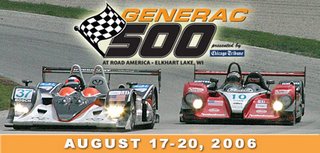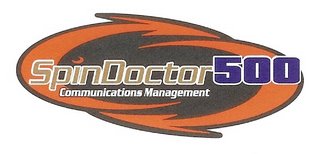The 52d Mac Tools U.S. Nationals (aka, the Big Go) at O'Reilly Raceway Park, near Indianapolis, is NHRA's Daytona 500. I hope the sanction/promoter runs with this opportunity to gain momentum for the series like a nitro car down the quarter-mile instead of allowing it to go up in smoke as if a white haze off Goodyear slicks.
 Drag racing too often gets dissed in our media universe -- the way Pluto did last week -- but count me a fan of the straight-line set. I wish anyone with any interest in the automobile the chance to stand on the starting line, between two 7,000 horsepower (!) 330+ mph dragsters as they rocket away, a truly amazing experience. My favorite is Top Fuel -- Brandon Bernstein's Bud King and Hot Rod Fuller's Valvoline machine are shown here (photos courtesy of KennyBernstein.com and NHRA) -- the class made famous by drivers with legendary nicknames: "Big Daddy" Don Garlits and Shirley "Cha-Cha" Muldowney and Funny Car switchovers Kenny "King of Speed" Bernstein and Don "Snake" Prudhomme. Dale Earnhardt's "The Intimidator" aside, no motoring stars have enjoyed such identifiable and enduring titles.
Drag racing too often gets dissed in our media universe -- the way Pluto did last week -- but count me a fan of the straight-line set. I wish anyone with any interest in the automobile the chance to stand on the starting line, between two 7,000 horsepower (!) 330+ mph dragsters as they rocket away, a truly amazing experience. My favorite is Top Fuel -- Brandon Bernstein's Bud King and Hot Rod Fuller's Valvoline machine are shown here (photos courtesy of KennyBernstein.com and NHRA) -- the class made famous by drivers with legendary nicknames: "Big Daddy" Don Garlits and Shirley "Cha-Cha" Muldowney and Funny Car switchovers Kenny "King of Speed" Bernstein and Don "Snake" Prudhomme. Dale Earnhardt's "The Intimidator" aside, no motoring stars have enjoyed such identifiable and enduring titles.Credit-where-credit-is-due: While I've been frustrated by NHRA's lack of an aggressive national media outreach program, it seems to me there has been an uptick
 this season. (The Pro Stock class even got some of USA Today's precious space for a story on Jason Line.) Melanie Troxel's outstanding start sure helped. Ditto for Angelle Sampey. J.R. Todd's wins in two of the three Western Swing events were historic. The truth is, diversity was cool in NHRA way before it was embraced by NASCAR.
this season. (The Pro Stock class even got some of USA Today's precious space for a story on Jason Line.) Melanie Troxel's outstanding start sure helped. Ditto for Angelle Sampey. J.R. Todd's wins in two of the three Western Swing events were historic. The truth is, diversity was cool in NHRA way before it was embraced by NASCAR.John Force has been, well, John Force. I've always thought John would have been perfect on the original Survivor, right alongside Rich and Sue and Rudy, so it seemed natural he finally got his own reality series. In fact, the summer's most impressive bit of business to me was the strong publicity and advertising commitment A&E made to the launch of Driving Force. I read and heard about John and daughter Ashley in news outlets that previously acted like drag racing was, well, a drag.
It was exactly the kind of "push" many of us have expected from the series sponsor for the last five years.
Another positive: ESPN2's excellent HD offerings, the best-produced telecasts in all of motorsports. The super-slow-motion replays, which reveal the frame rails twisting and flexing, have increased our understanding of the extreme forces put on the cars and competitors. Technology is great, but like everything else, TV is a people business. Mike Dunn, a 22-time national event winner, is racing's best analyst. His ability to explain why a pass was or wasn't successful as quickly as a nitro car goes from A to B is uncanny. Dunn has made smooth transitions between hosts Marty Reid and Paul Page -- not as easy as you might think -- while Page has been almost spot-on in his new role. He had one of the season's best lines at the Mile-High Nationals. Dunn chuckled as workers struggled to pull Todd's racer out of the sandtap, but Page cautioned him not to laugh, saying: "That's how the pyramids were built!"
The U.S. Nationals should mean yet more national coverage, but let's be honest, there's plenty of work to do. While NHRA's Anthony Vestal is certainly helpful and there are a few accomplished team/sponsor PR people on duty (Susan Arnold, of the Bud King team, last year became the first from drag racing to earn the Jim Chapman Public Relations Award), many others sit on the opposite side of the ladder. The all-too obvious campaign that should have been efforted for Hillary Will apparently never sparked a thought. At Firebird Raceway last February, the rep for double TF winner Fuller's team failed to follow-up on my interview request, then after-the-fact asked in an E-mail why I didn't go searching for him. (!) So, it came as no surprise when I learned the next day this guy had not even bothered to introduce himself to Susan Wade, of National Speed Sport News, 1320tv.com video network as well as other media platforms (and AARWBA Western VP), one of the very few reporters who follow the full series. And, I'm still wondering why Troxel, Sampey, Will, Ashley Force and Erica Enders haven't been "packaged" for The View, Live with Regis and Kelly, and similar shows?
The dirty little secret, however, is too many Big Time Journalists simply think drag racing is beneath them. Oh, the great characters they miss meeting, and the wonderful stories they miss telling!
ESPN2 has scheduled 10 hours of Indy race coverage, including five hours of eliminations on Monday. I suggest you go check out the Big Go.
 Congratulations to popular PR rep Drew Brown (at GMR's Charlotte office) and wife Karin on the birth of twins Emery Lisa and Owen Martin. Drew's duties this season have included the Lowe's Fernandez Racing sports car team.
Congratulations to popular PR rep Drew Brown (at GMR's Charlotte office) and wife Karin on the birth of twins Emery Lisa and Owen Martin. Drew's duties this season have included the Lowe's Fernandez Racing sports car team.[ more next Tuesday, if not before . . . ]














